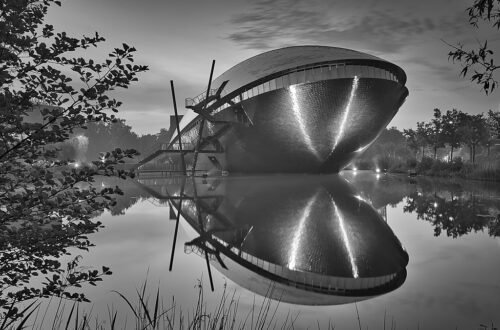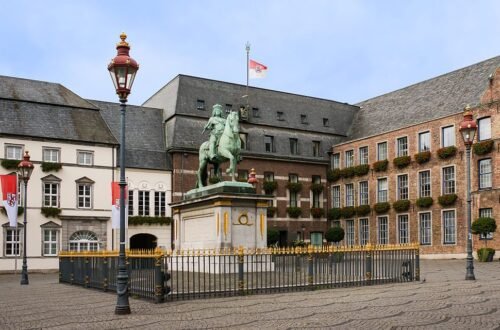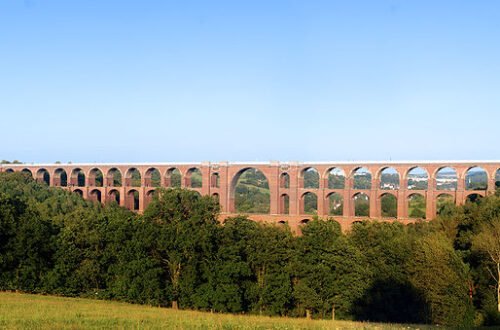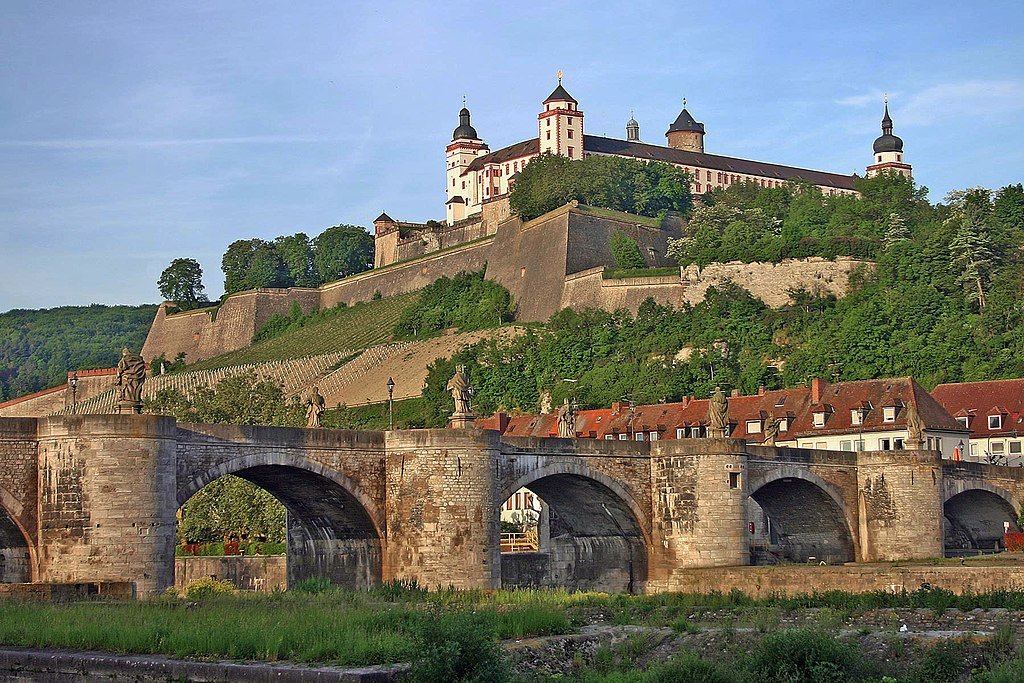
15 Best Things to See in Würzburg (Germany)
Würzburg is a medieval university city in Franconia that is surrounded by vineyards. The two palaces on either side of the main river command everyone’s attention. The UNESCO-listed Würzburg Residence, the Baroque residence for the Prince-Bishops of Würzburg, is located on the right bank behind the old town and is a palace with the largest fresco in the entire world. The Marienburg Fortress, where the Prince-Bishops resided prior to the 18th century, is located on the left bank. A city with amazing churches, chapels, and museums is located between them. The majority of them feature creations by Tilman Riemenschneider, a sculptor whose work is considered one of the masterpieces of the Northern Renaissance. He created numerous religious monuments and effigies in the city and even spent some time imprisoned in the stronghold during the German Peasants’ War in the sixteenth century. Let’s look at the greatest activities in Wurzburg:
- Würzburg Cathedral
- Marienkapelle
- Würzburg Residence
- Käppele
- Hofkirche
- Martin von Wagner Museum
- Marienburg Fortress
- Alte Mainbrücke
- Museum am Dom
- Kollegiatstift Neumünster
- Fürstengarten
- Röntgen Memorial Site
- Rathaus Würzburg
- Schloss Veitshöchheim
- Museum für Franken
Würzburg Cathedral
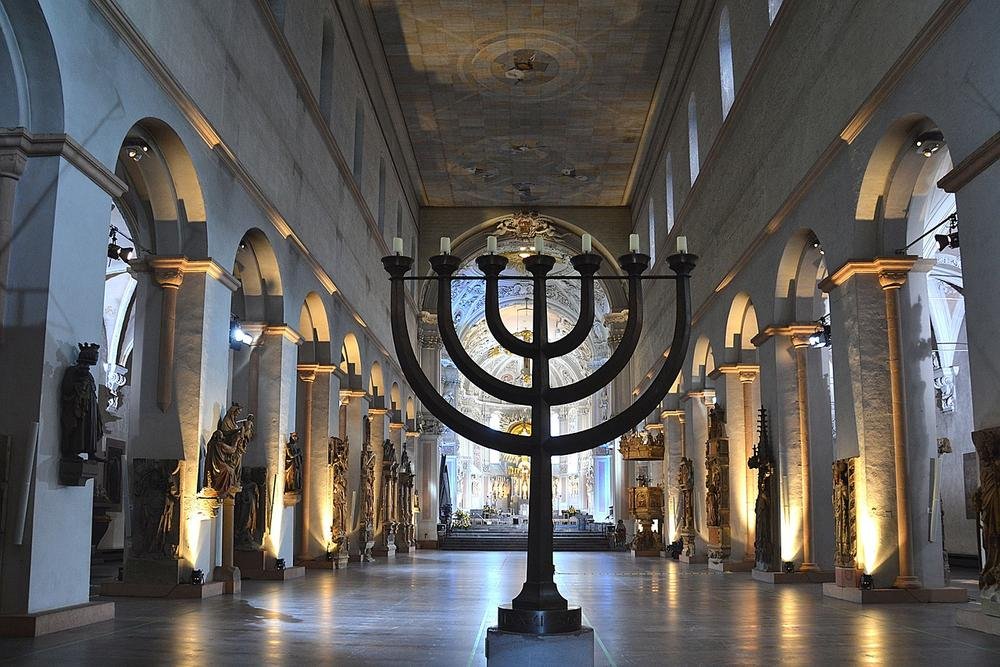
Würzburg Cathedral still features a lot of captivating artwork and architecture by Tilman Riemenschneider and Balthasar Neumann despite suffering significant damage during the Second World War. The current structure of the church, the fourth-longest Romanesque church in Germany at more than 100 metres, was started in the 11th century and is renowned for its unusual length. For the entirety of its existence, Würzburg Cathedral served as the Prince-Bishops’ final resting place, which is how Riemenschneider and Neumann became engaged. Along with the Apostles’ Altar from 1502/06, Riemenschneider sculpted the exquisite tomb effigies for Rudolf von Scherenberg (1499) and Lorenz von Bibra (1519). A chapel created by Neumann, housing the tombs of four kings, served as the final resting place for the Prince-Bishops of the House of Schönborn.
Marienkapelle
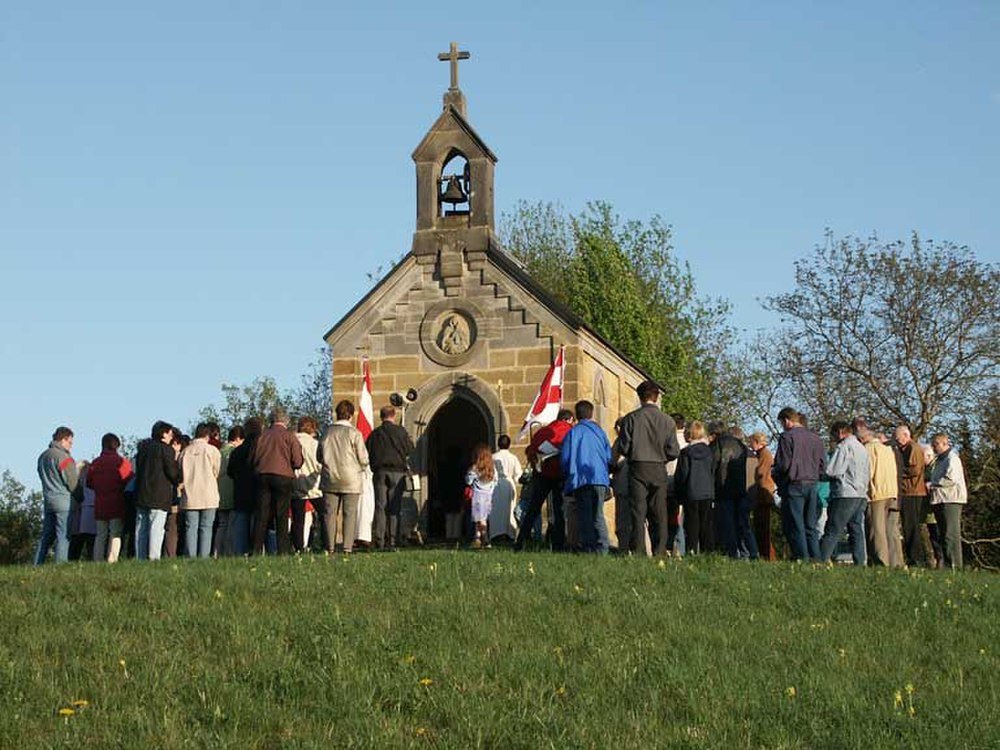
Despite its massive size, the Marienkapelle in the Unterer Markt square is recognised as a chapel. Between 1377 and 1480, when the tower was finished, the edifice, which is all in a single Late Gothic style, was constructed. Again, Tilman Riemenschneider made a significant contribution to the aesthetic value of this monument. Along with the tomb of the Franconian nobleman Konrad von Schaumburg, he also carved the Adam and Eve figures that are located on the south gateway. The church was bombed by the Allies in 1945, and this epitaph is one of many that have survived. Balthasar Neumann is also interred there, but since there was no memorial at the time of his passing, a bronze plaque was put up in the 1950s.
Würzburg Residence
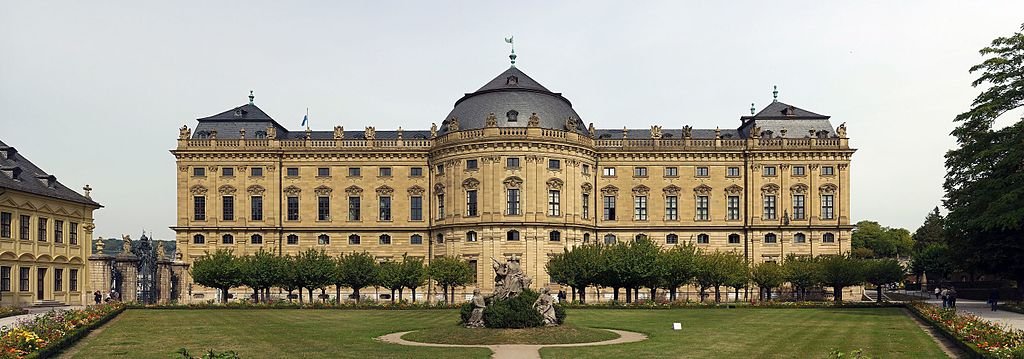
The palace for the Prince-Bishop Johann Philipp Franz von Schönborn, a UNESCO World Heritage Site, is on a scale that must be seen to be believed. The Würzburg Residence, one of Europe’s major Baroque palaces built between 1720 and 1744, is regarded as Balthasar Neumann’s most significant work. Despite being damaged during the Second World War, the Residence’s magnificent architecture was preserved. With a self-supporting trough vault that rises to 23 meters and a massive painting by Giovanni Battista Tiepolo, the grand staircase is nothing short of stunning. This massive fresco, which represents the four continents of Europe, America, Asia, and Africa, is the largest in the entire world. Visitors were welcomed in the magnificent Imperial Hall, a brilliant collection of paintings, stuccowork, statues, and marble that was finished in 1751 at a staggering cost.
Käppele
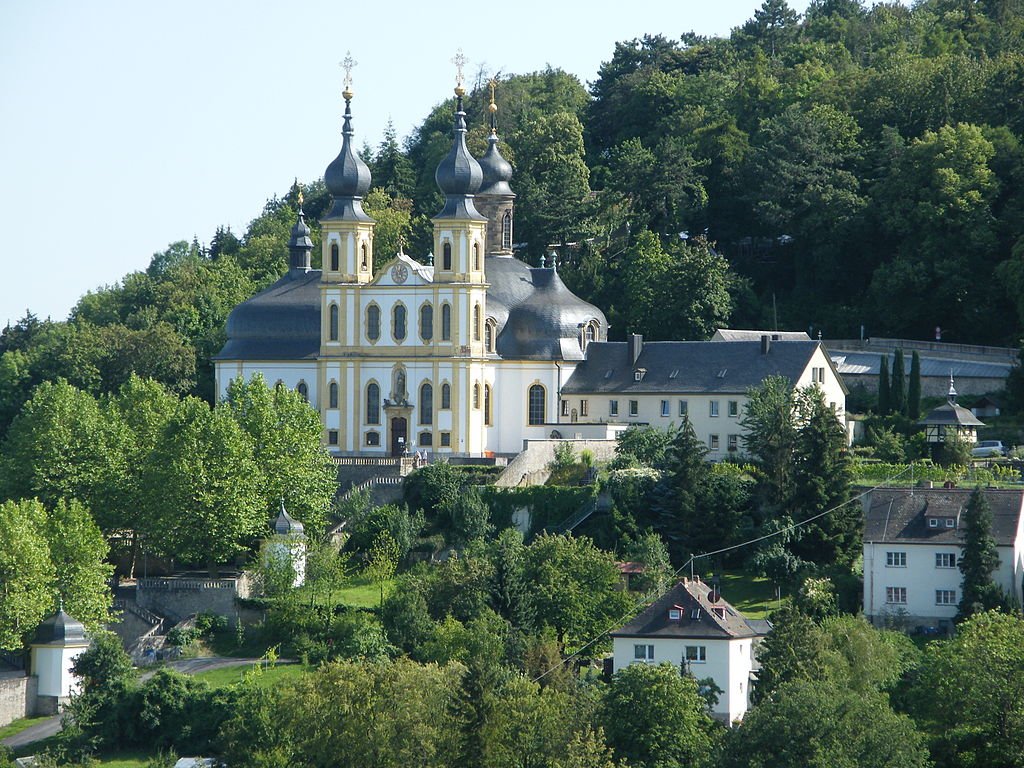
On the 366-meter Nikolausberg hill on the left bank of the Main, next to the Marienburg fortification, lies another of Balthasar Neumann’s Baroque masterpieces. This pilgrimage church, which can be accessed via 352 stairs and is recognisable by its bud domes, was constructed in just a few years up to 1750 and once again features pieces by the court sculptor Johann Peter Wagner. He carved the 14 stations of the cross into life-size figures at small chapels scattered along the main church’s circuit. The ensemble took more than 30 years to create, and there are a total of 77 sculpted figurines in it. Spend some time admiring the frescoes, the Neoclassical high altar, and the decorative stuccowork inside the church.
Hofkirche
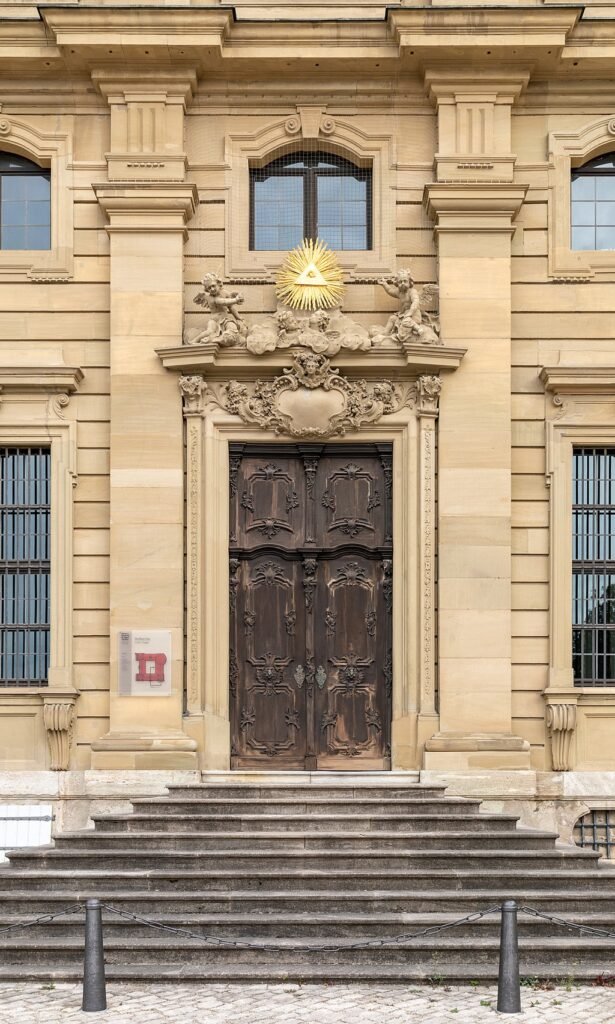
The chapel of the palace is regarded as one of the pinnacles of sacral Baroque architecture. It is located on two levels of the Residenz and features oval vaults and curved walls. Almost everywhere you turn, marble, giltwork, and stucco are exquisitely textured. The white marble used to create the chapel’s six gleaming statues was crafted in Genoa, and Antonio Giuseppe Bossi, an Italian, was responsible for the high altar’s beautiful marble-effect stuccowork and the ornamentation on the ceiling. Look up at the three imposing frescoes in the domes, which depict the Battle of Heaven, the Virgin’s Coronation, and the Martyrdom of the Three Apostles of the Franconians: Kolonat, Totnat, and Kilian.
Martin von Wagner Museum
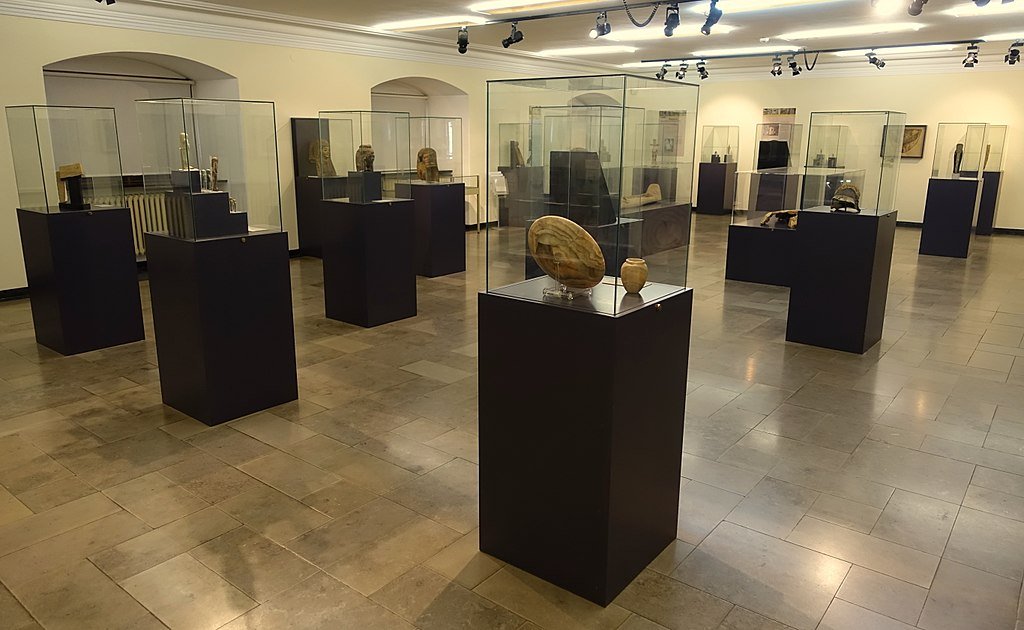
A museum for archaeology and art, based on a collection that was founded in 1832, is located in the south wing of the Residence Palace. Johann Martin von Wagner, who gave his personal works of art and ancient artefacts to the museum in 1858, is remembered by the institution’s name. One of the largest collections in the nation is found in the antiquities galleries, where the variety of Ancient Greek vases totals over 5,000 pieces. Along with paintings by painters like Hans Leonhard Schäufelein, Pieter Claesz, and Max Liebermann from the early Renaissance to the 1900s, the museum also houses Dutch, German, and Italian sculptures by Tilman Riemenschneider. The graphic collection is also valuable for its Albrecht Dürer woodcuts and copper engravings.
Marienburg Fortress

The Marienburg Fortress, a recognisable landmark on the left bank of the Main, is perched atop a spur high above the river at a location that has been protected since the Celtic era. The construction of protective walls around Würzburg’s original church, which had stood in this location since the eighth century, marks the beginning of the castle’s history. The Marienburg Fortress, which served as the Prince-Bishops’ residence for over five centuries up until 1719, underwent a progressive transformation from a defensive structure into a Renaissance and later a Baroque palace after being nearly destroyed by the Swedes during the Thirty Years’ War. In addition to revealing Würzburg’s 1,200-year history, the Fürstenbaumuseum uses antique furnishings to let visitors visualise the grandeur of the Prince-Bishops. The dungeon where Renaissance artist Tilman Riemenschneider was detained for supporting the peasants during the German Peasants’ War in the 16th century is one of the tour’s many educational stops.
Alte Mainbrücke
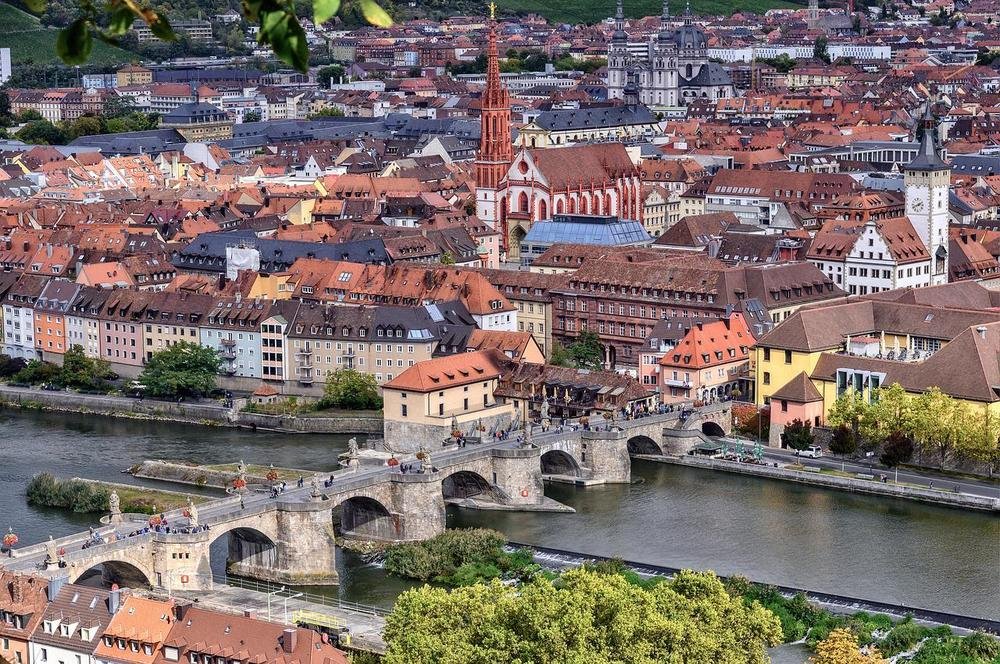
The pedestrian bridge, Alte Mainbrücke, which connects Würzburg Altstadt with the former fishermen’s area, served as the city’s sole river crossing up until 1886. As you pass, you can see the St. Kilian Cathedral, the Alstadt, the Marienburg Fortress, and other stunning sights to the east and west. Starting in 1476, the bridge replaced a previous Romanesque structure that had been destroyed by flooding. The bridge was completely guarded until the 1700s, at which point Prince-Bishops Friedrich Karl von Schönborn and Christoph Franz von Hutten created 12 statues of saints facing the route.
Museum am Dom
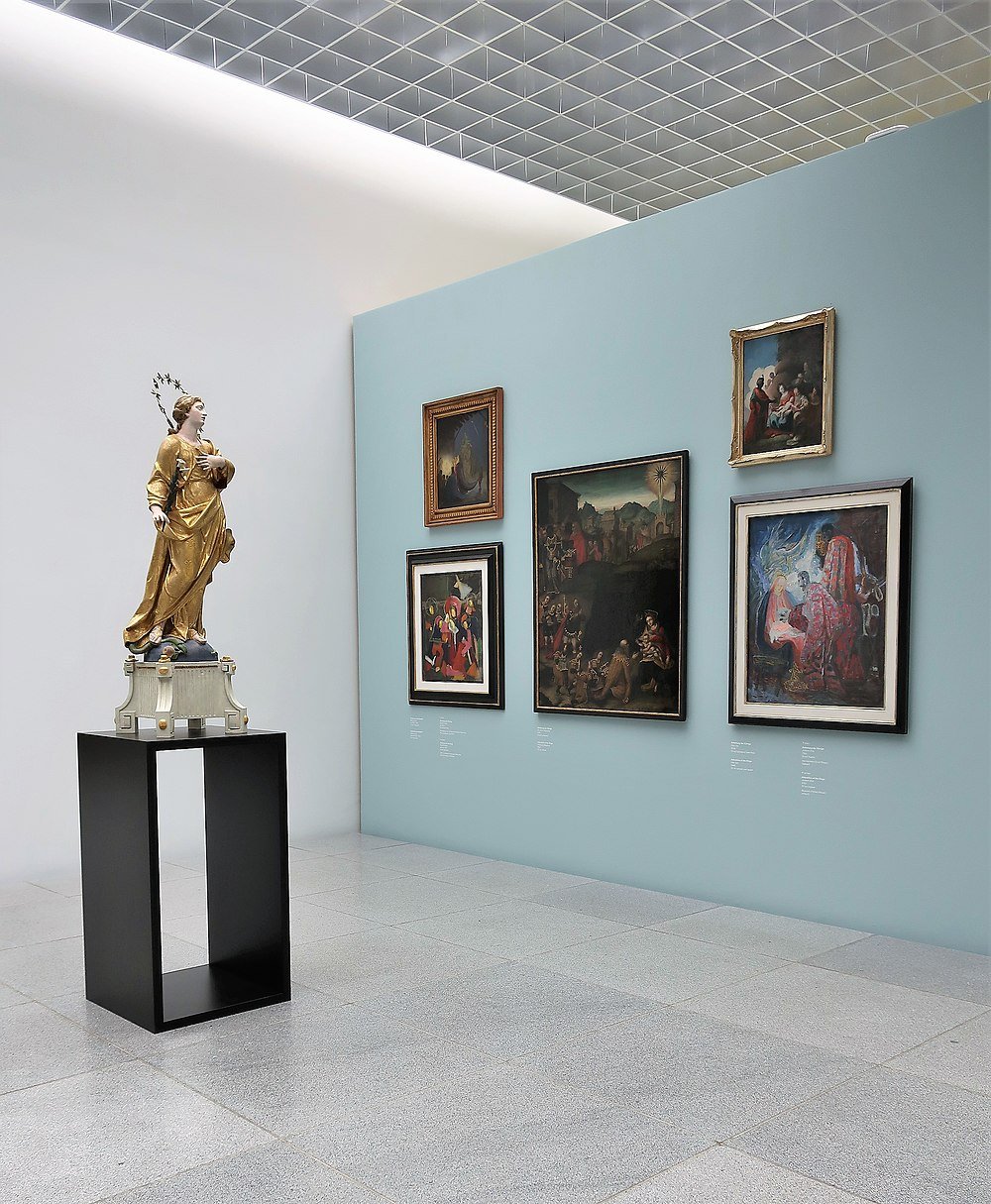
Around 700 sculptures and paintings with Christian themes, from the 900s to the present, are housed in the art museum for the diocese of Würzburg, which opened in a contemporary structure in 2003. Alongside Würzburg’s historic masters, modern and contemporary artists like Joseph Beuys, Andy Warhol, Käthe Kollwitz, Ernst Barlach, and Otto Dix share the space. Good old Riemenschneider, Johann Peter Wagner, and the 18th-century Baroque painters Johannes Zick and Georg Anton Urlaub also make an appearance.
Kollegiatstift Neumünster
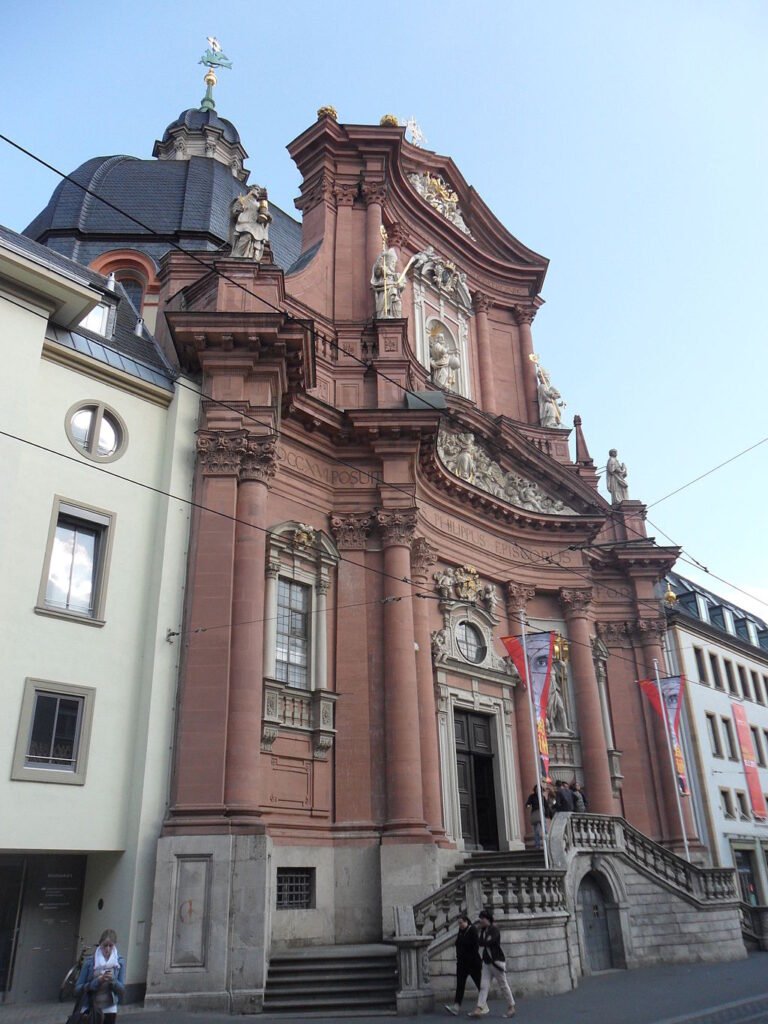
Although the majority of the existing construction is from a massive Baroque renovation that took place in the 18th century, this church originally began as a Romanesque basilica in the 1000s. Since Bishop Meningaud built a memorial to house the tombs of St. Kilian and his companions Kolonat and Totnan, missionaries who were martyred in 689, there has been some kind of religious structure here. Along with Bishop Meningaud’s grave, which has the earliest known Frankish inscription, their tombs are located in the crypt. A Gothic plague cross from the 1300s and a Madonna carved by Riemenschneider in 1493 are two pieces of art you should check out upstairs.
Fürstengarten
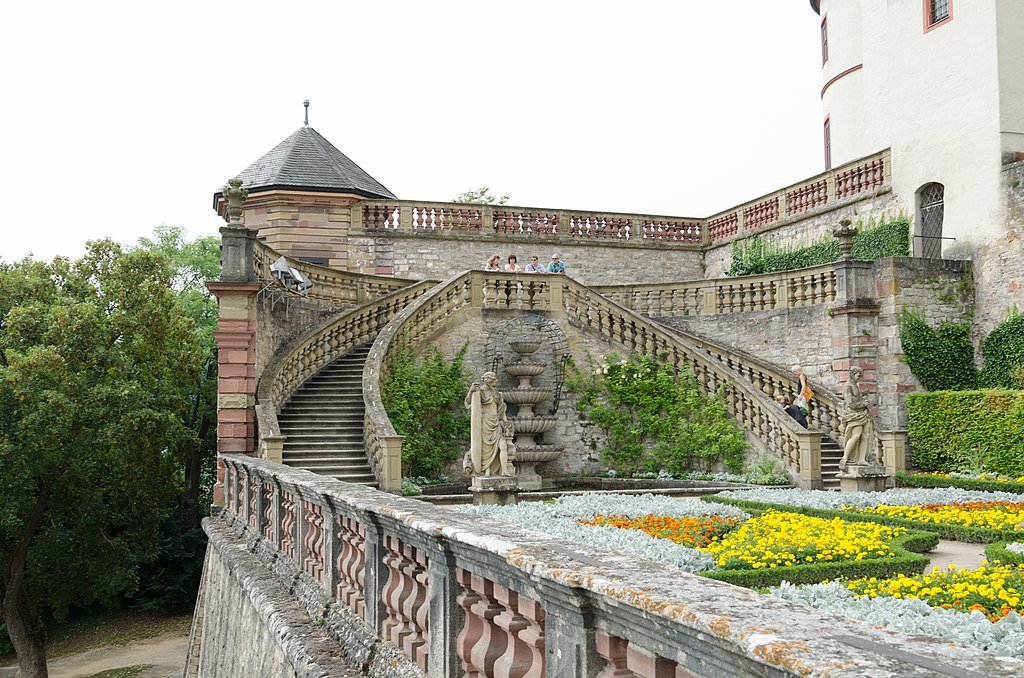
On one of the old gun platforms atop the fortress’s medieval ramparts, Prince Bishop Johann Philipp von Schönborn built a beautiful little formal garden in the 17th century. On the complex’s eastern side, the Fürstengarten is a geometric garden with fountains, orderly flowerbeds, and pavilions. The Renaissance “giardini segreti” of Italy is probably where the concept originated (Secret Gardens). The view of the Main and Würzburg from the balustrade is the best.
Röntgen Memorial Site
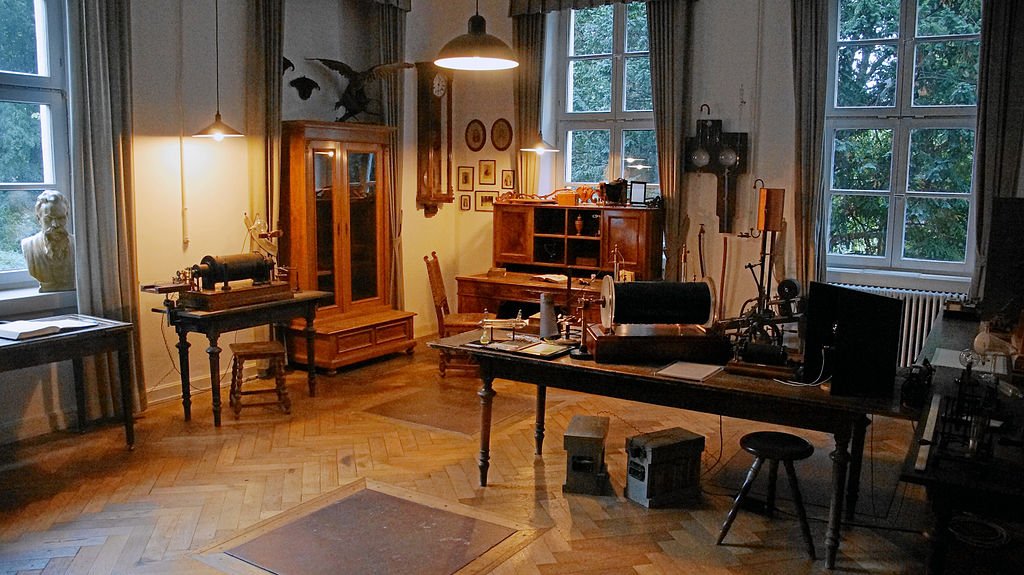
Wilhelm Röntgen made the discovery that won him the Nobel Prize in 1901 at two laboratories at the former physics institute of the University of Würzburg. In the late afternoon of November 8, 1895, Röntgen discovered rays that could pass through solid objects, giving rise to the term “X-Rays.” A peek at particle physics at the end of the 19th century can be seen in the modest exhibit. In the next area are all the early uses of Röntgen’s discovery, and you can watch a reenactment of his experiment using the same equipment he did: There are old X-ray tubes and a 1912 Siemens & Halske X-ray apparatus.
Rathaus Würzburg
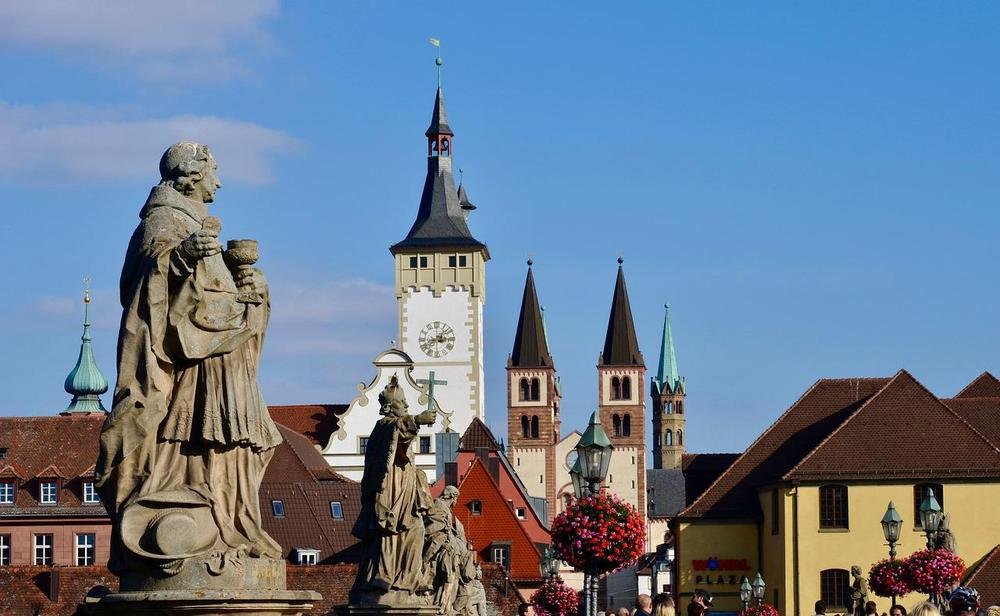
The tower that belonged to the medieval town hall, known as the Grafeneckart, is one of the distinctive features of Würzburg’s historic skyline. The Rathaus is a mishmash of connected structures built at various points throughout history. The oldest of these, named for its first owner, Graf (Count) Eckard de Foro, is the Romanesque Grafeneckart, which dates back to the 1200s. The Wenzelsaal (also known as Wenceslas Hall), the city’s oldest secular space, is located inside this building. The Grafeneckart also houses a memorial room for the bombing on March 16, 1945, which resulted in the overnight deaths of 5,000 people.
Schloss Veitshöchheim
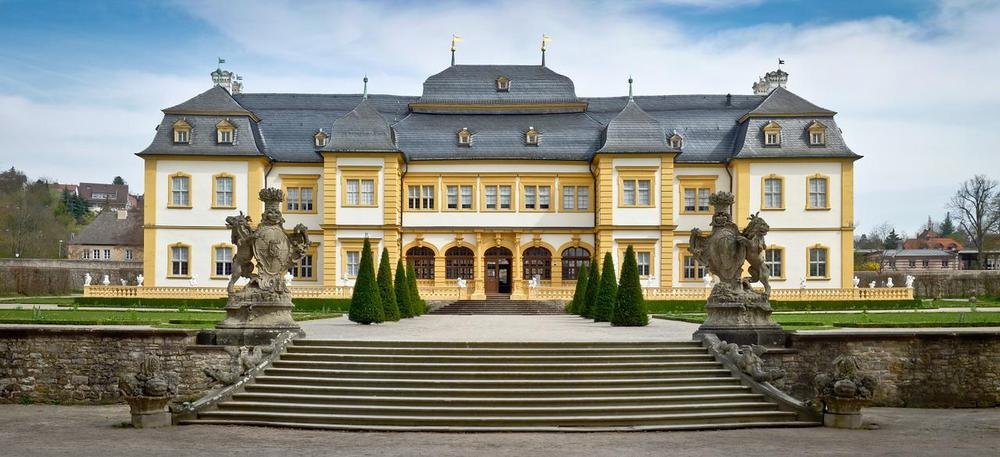
The Prince-Bishops of Würzburg and later the Bavarian Kings kept a summer palace in Veitshöchheim, just northwest of the city. From April to October, the palace is open for guided visits. It is renowned for its stuccowork by Antonio Bossi, sculptures by Johann Peter Wagner, and the opulent private chambers that the Duke of Tuscany utilised. The Rococo garden, however, may be a major attraction. On the ground floor of the palace, there is an exhibition explaining how this magnificent work of art and gardening was created. The gardens, which were designed in the 18th century, are adorned with more than 300 sculptures, as well as replicas of the Boboli Gardens in Florence’s artificial ruins, arbours, pavilions, and enchanting grottoes. The kitchen garden is a marvel all on its own because it is filled with largely forgotten historical fruits, vegetables, and herbs.
Museum für Franken
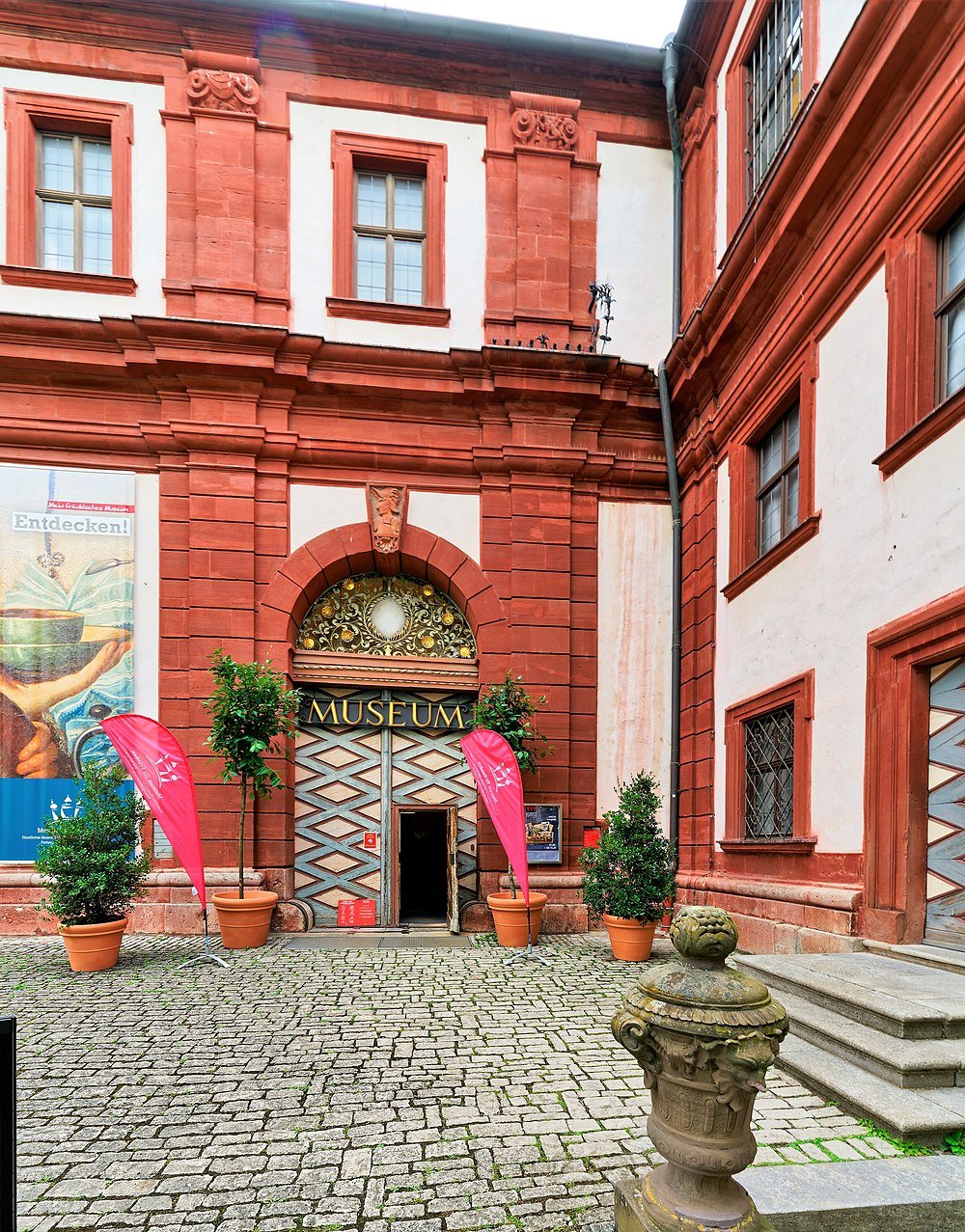
A museum filled with magnificent paintings by Franconian artists is located on Marienburg’s outer walls. Archaeology, fine and applied art from Würzburg and the Mainfranken region from the Palaeolithic to the 1800s are displayed in 45 rooms. There are works of art made by Riemenschneider, such as his original Adam and Eve sculptures from the Marienkapelle and a sombre Madonna from 1505. A gem from the late Bronze Age carved Romanesque capitals, and an abundance of Baroque sculptures by artists like Ferdinand Dietz and Johann Peter Wagner are also on display. For its glassware, silver and gold, vintage clocks, and textiles from the Middle Ages, the arts and crafts department is a must-see.


